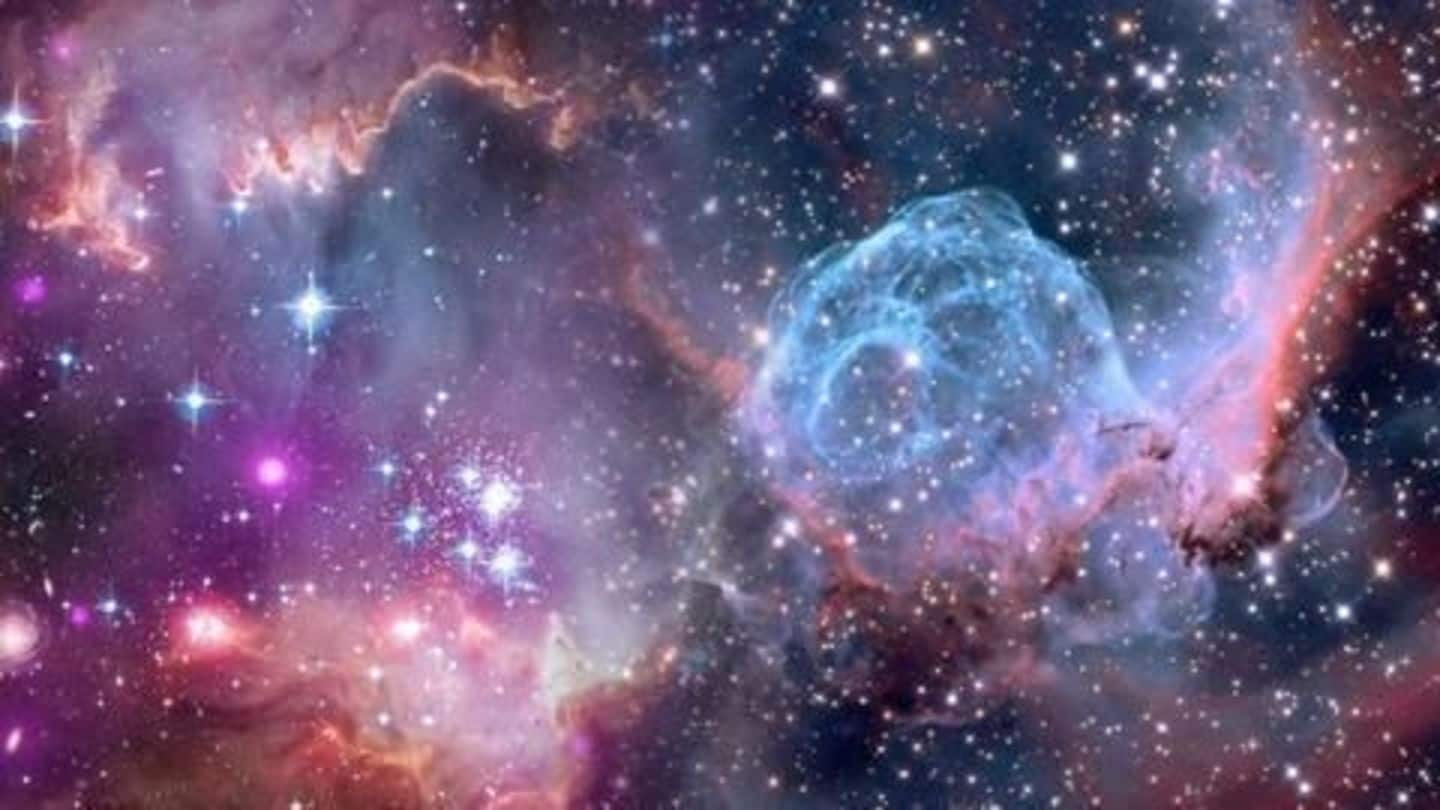
Indian scientists discover galaxy 'supercluster', calls it Saraswati
What's the story
Taking a giant leap for Indian space research, Indian astronomers discovered a supercluster of galaxies located in the direction of Pisces.
The supercluster, which reportedly contains 43 galaxies has been named 'Saraswati'.
It is speculated to be one of the largest structures within the known part of the universe and weighs as much as 20 million billion suns.
Read about it here!
Definition
What is a supercluster?
While a galaxy cluster reportedly consists of tens of thousands of galaxies, a supercluster comprises of chains of galaxies and galaxy clusters held together by gravity. The Milky Way galaxy, where we are, is situated in the Laniakea Supercluster discovered in 2014.
Details
What do we know about the Saraswati supercluster?
Saraswati is estimated to be about 10 billion years old and is 4 billion light years away from earth.
It consists of about 10,000 galaxies grouped in 42 clusters and weighs 20 million billion times our sun.
Joydeep Bagchi, one of the scientists who made the discovery notes, Saraswati is "embedded in a large network of cosmic filaments traced by clusters and large voids."
About
Who made the discovery?
The discovery was jointly made by members of the Inter University Centre for Astronomy and Astrophysics (IUCAA) and the Indian Institute of Science Education and Research (IISER), in Pune along with researchers from two other universities.
The research has been published in a paper authored by Joydeep Bagchi (IUCAA) and Shishir Sankhyayan (IISER) in The Astrophysical Journal published by the American Astronomical Society.
Conclusion
Saraswati: How does it help understand the universe?
According to the authors, "the discovery will help explain how such extreme large scale, prominent matter-density enhancements had formed billions of years ago when Dark Energy had just started to dominate structure formation.''
It challenges the popular cold dark matter model which does not explain the existence of large entities such as 'Saraswati' and hence bring back focus on theories including the Big Bang.